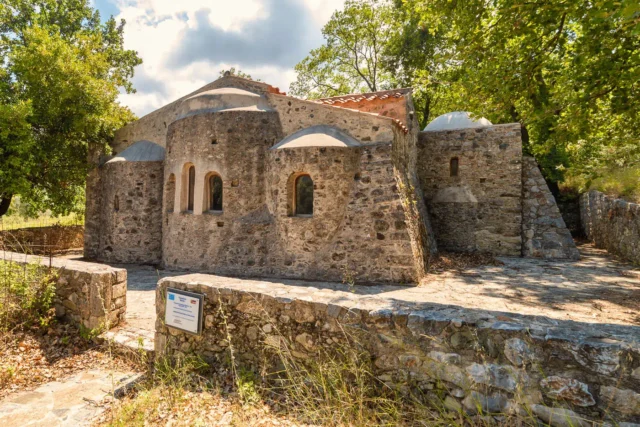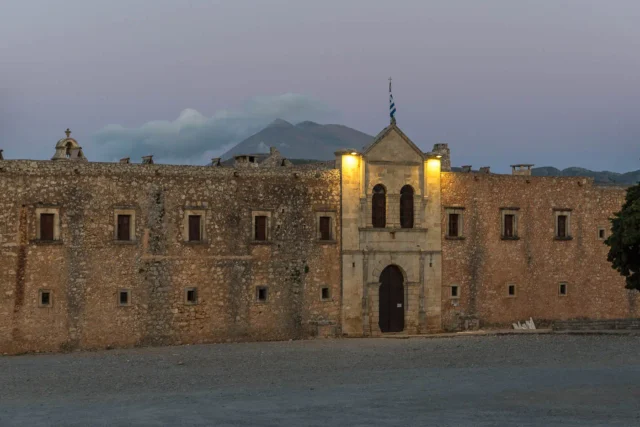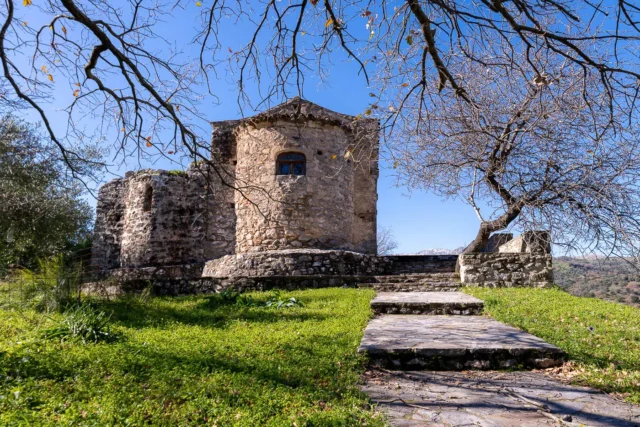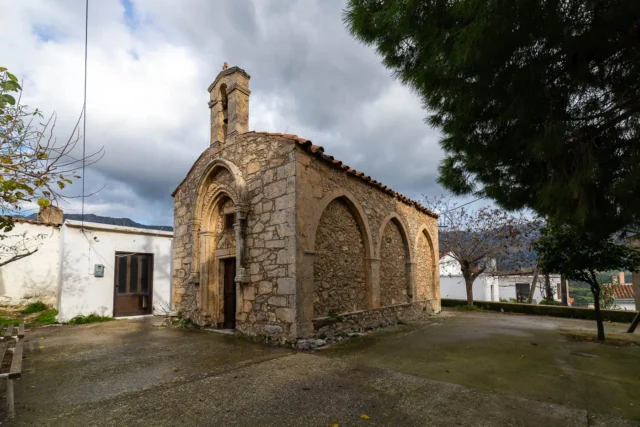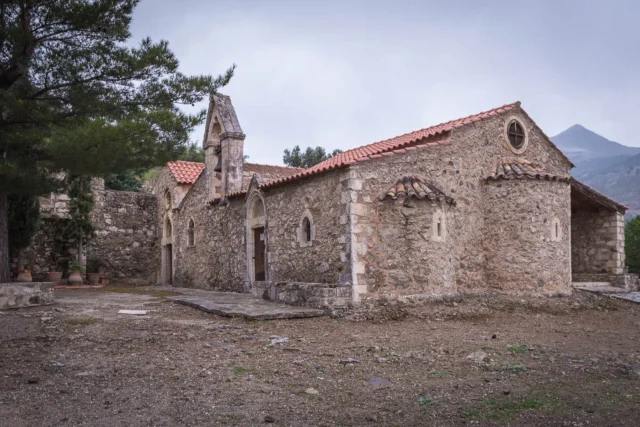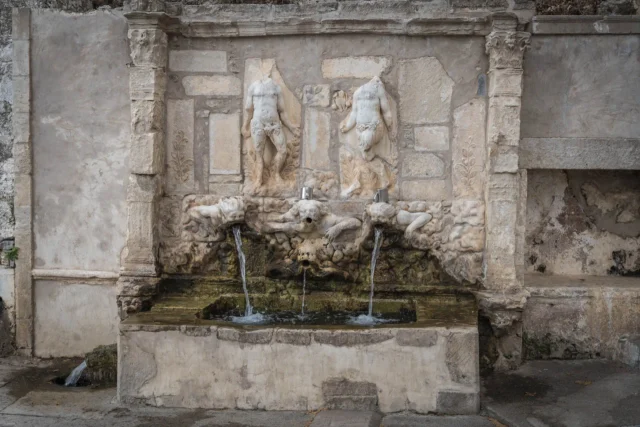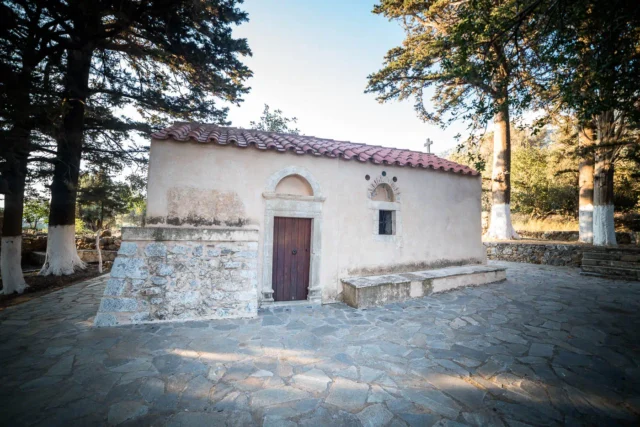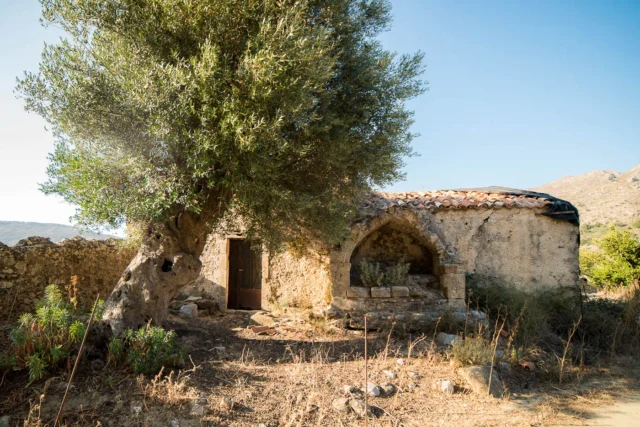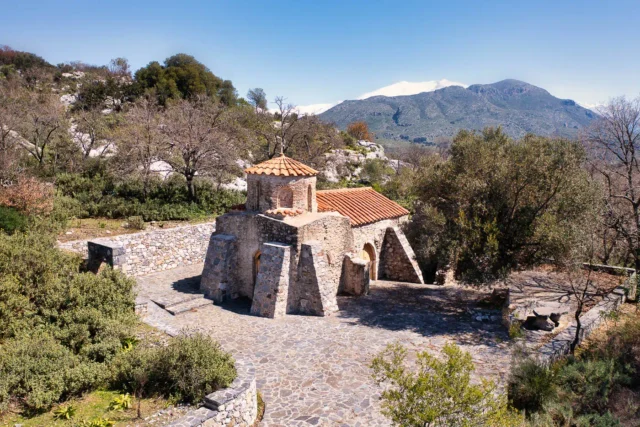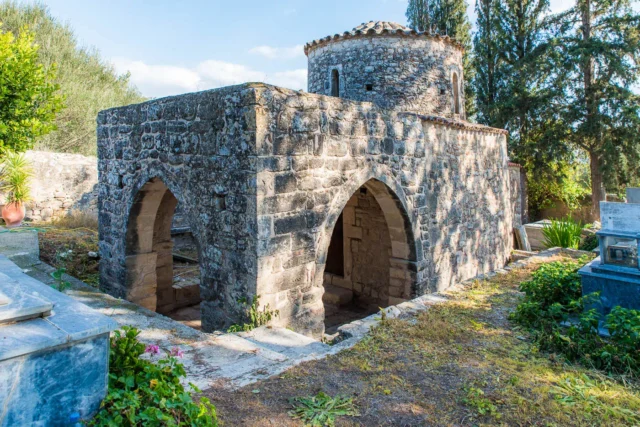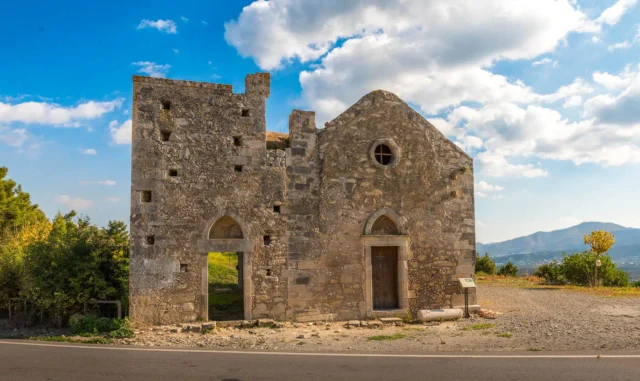95
listings found
Categories
Active filters:
Panagia Kera
Panagia Kera, near Nefs Amari, is a 15th-century three-aisled basilica, constructed over a 13th-century cross-in-square church, potentially an earlier Apollo temple site. This Byzantine masterpiece features frescoes, including the Dormition of the Virgin and Ascension, and the Kallergis family coat of arms, linking it to the Venetian period. Once a monastery katholikon under Moni Asomaton, it stands amidst ancient olive groves, with remnants of its past visible in the sanctuary and surrounding area, reflecting Crete's rich historical layers and cultural influences.
Arkadi monastery
Located on a fertile plateau, this monastery is a symbol of Cretan resilience with a 16th-century structure blending Renaissance and Baroque styles. It became a refuge during the 1866 Cretan Revolt against Ottoman rule, where defenders, led by Abbot Gabriel Marinakis, detonated gunpowder in a heroic act of self-sacrifice. The event is commemorated on November 8th. The complex includes a museum and is linked to the Agios Antonios church on Veni hill. Other feast days are May 21st and August 6th.
Agia Anna
Agia Anna, near Nefs Amari, Crete, features 12th-century origins and 14th-century renovations. It houses 1225 Byzantine frescoes, including the Deesis and Cretan saints like Apostle Titus. The church's 1196 inscription marks its early phase, reflecting Byzantine art evolution in Crete. The frescoes, though aged, retain vibrancy, showcasing artistic and spiritual heritage. Located in the Amari Valley, the site offers insights into Crete's historical and cultural context, despite occasional access restrictions.
Valsamonero monastery (Aghios Fanourios)
Explore the historic Varsamonero Monastery in Crete, known for its well-preserved 14th-15th century frescoes and connection to Saint Phanourios.
Vrontisi monastery
Moni Vrontisiou, a historic monastery in the Psiloritis Mountains of Crete, dates back to the 9th century. Dedicated to Saint Anthony and the Touching of Thomas, it is known for its architecture and frescoes. The monastery played a role in the Cretan struggle for independence, serving as a refuge for monks and a hub for revolutionary activities. Its fortified walls, two-story main building, and bell tower stand as a testament to its history. The 15th-century marble fountain at the entrance is a highlight, featuring intricate carvings. The main church houses surviving frescoes from the 14th century. Moni Vrontisiou is located 49 kilometers southwest of Heraklion and is open daily from 8:00 AM to 5:00 PM with free admission.
Panagia in Livada
Located in Livada, near Fourfouras in Amari, this is a small, single-aisled, barrel-vaulted church from the 14th century. It features well-preserved frescoes from that period, financed by Nicholas Arkoleo, depicting the Virgin Mary as Blachernitissa, scenes from Christ's life, and military saints. The structure, originally built with rubble masonry, was expanded westward in the early 19th century. After restoration in 2006, the building and its Byzantine iconography are in good condition.
Kaloeidena monastery
The Afentis Christos Church, a Byzantine structure overlooking Ano Meros, is a focal point for local faith, highlighted by annual August 6th feasts with communal meals and traditional celebrations. Kaloeidena Monastery, now largely in ruins, needs preservation, despite its historical and spiritual value. Both sites reflect Amari Valley's enduring traditions, with efforts aimed to revitalize Kaloeidena, ensuring its role as a cultural and religious landmark. The church stands as a testament to the local community's deep-rooted faith, while the monastery's restoration aims to preserve Crete’s heritage.
Panagia in Smilés
Explore the remnants of the Church of Panagia in the deserted village of Smilés, Crete. Discover its 14th-century frescoes and learn about its historical significance
Aghios Pavlos (Saint Paul)
The Church of Saint Paul, a 13th-century Byzantine church near Kamilari, Crete, features a large narthex and frescoes.
Aghios Georgios Falandras
Venetian-era monastery destroyed in 1821. Its history intertwines with Crete's religious traditions and fight for Greek independence.
Early Christian Basilika at Onithe
A significant Early Byzantine structure in Rethymno, Crete, dating to the late 5th and early 6th centuries AD. This three-aisled basilica, measuring approximately 36 x 17 meters, was built on a slope with stepped aisles separated by colonnades. Architectural features include a portico, narthex, a potential atrium, and an eastern semicircular apse with a synthronon. Flanking the sanctuary were pastophoria, likely a Prothesis and Diakonikon. Mosaic floors decorated the central aisle, sanctuary, and narthex.
Moni Koudouma
Koudoumas Monastery is one of the oldest monasteries on the southern coast of central Crete, Greece. It is situated at the exit of the Katarraktis gorge in the Asterousia Mountains, […]









